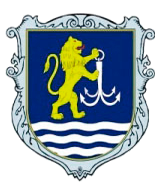PROJECT-ORIENTED MANAGEMENT IN SHIPPING AS A BASIS FOR ENSURING SAFETY
Abstract
Introduction. Risks are a constant accompanying element in the shipping. The project approach involves considering all the variety of risks in an integral manner, that forms a holistic view of possible negative situations during the voyage, which is another factor in justifying the feasibility of using project-oriented management in shipping. Such integration makes it possible to take into account the impact of any type of risk and risk situations arising during the project on the final result of the project. Results. In this study, the main provisions of the project-oriented management in shipping are proposed. The legality of the application of the project-oriented approach is substantiated, in accordance with the methodology of project management, the essence and types of projects within the operational activities of shipping companies are determined. Two options for consideration of the boundaries of the project are presented and the consideration of projects as an understanding of the voyage (or contract) in the broad sense is justified – in view of the process of organizing and managing the execution of the freight contact for the movement of cargo from port A to port B. In this case, the boundaries of the project are wider and include the process of preparing the freight contract and the analysis of the results of its realization. This approach is universal for a project-oriented management in shipping and forms a basis for the a project approach for any options for the ships operation under any freight contracts and considers all aspects related to the shipping: technical, environmental, commercial, etc. The essence of the main stages of the life cycle for this category of projects, as well as the components of the project success, have been determined. It is substantiated that "safety" is one of the indicators of the success of projects. Conclusions. A project-oriented approach to management in shipping makes it possible to synthesize various methods and approaches to assessment and safety assurance traditionally adopted or implemented on the basis of IMO recommendations in shipping and risk management methods in project management. Thus, the integration of the best practices of risk minimization in shipping in the context of safety and risk minimization within the project methodology forms a new effective approach to ensuring the safety of shipping. The presented results form the basis for further research on safety issues within the project-oriented approach to management in shipping.
Downloads
References
2. Pavlova N., Onyshсhenko S., Obronova A., Chebanova T., Andriievska V. Creating the Agile Model to Manage the Activities of Project Oriented Transport Companies. Eastern-European Journal of Enterprise Technologies. 2021. № 1(3) (109).С. 51–59. doi: 10.15587/1729-4061.2021.225529
3. Rusanova S., Onyshсhenko S., Piterska V. Modelling the Project Transport Support Optimal Option. Technology audit and production reserves. 2021. № 1 (2 (57)). С. 43-48. doi: 10.15587/2706-5448.2021.225288
4. Bondar A., Andrievska V., Onyshchenko S. Identification of creation and development projects of logistic systems. Розвиток методів управ- ління та господарювання на транспорті. 2019. №. 69 (4). С. 26–37. doi: 10.31375/2226-1915-2019-4-26-37
5. Rusanova S., Onyshсhenko S. (2020). Development of transport and technological process options' concept for goods delivery with participation of maritime transport. Technology audit and production reserves. 2020. № 1(2 (51)). С. 24–29. doi: 10.15587/2312-8372.2020.198373
6. Lapkina I., Prykhno Y., Lapkin O. Content optimization of the development of multi-project of a shipping company. Eastern-European Journal of Enterprise Technologies. 2020. № 2(3). С. 104–116. doi: 10.15587/1729-4061.2020.199477
7. Lapkina I., Malaksiano M., Savchenko Y. Design and optimization of maritime transport infrastructure projects based on simulation modeling methods. CEUR Workshop Proceedings. 2020. Р. 36–45.
8. Немчук О.О., Верещака М.А., Онищенко С.П. Сутність та спеціфіка інфраструктурних проєктів на водному транспорті. Розвиток тран- спорту. 2021. № (1 (8)). С. 135–148. doi: 10.33082/td.2021.1-8.13
9. Шумило О.М., Россомаха О.І., Шахов А.В. Удосконалення моделі визначення вартості життєвого циклу судна. Розвиток транспорту. 2021. № (1 (8)). С. 113–124. doi:.10.33082/td.2021.1-8.11
10. Melnyk O., Bychkovsky Yu., Shumylo O., Onyshchenko S., Onishchenko O., Voloshyn A., Cheredarchuk N. Study of the risk assessment quality dependence on the ships accidents analysis. Scientific Bulletin of Naval Academy. 2022. Vol. XXV. P. 136–146. doi: 10.21279/1454-864X-22-I1-015
11. Бичковський Ю.В., Мельник О.М. Сучасна методика оцінки рівню безпеки судна та шляхи його підвищення. Розвиток транспорту. 2021. № 2 (9). C. 37–46. doi:10.33082/td.2021.2-9.03
12. Bondar A., Bushuyev S., Bushuieva V.,Onyshchenko S. Complementary strategic model for managing entropy of the organization; Proceedings of the 2nd International Workshop IT Project Management (ITPM 2021) Slavsko, Lviv region, Ukraine, February 16-18, 2021. CEUR Workshop Proceedings, P. 285–302. http://ceur-ws.org/Vol-2851/paper27.pdf
13. Bushuyev S., Onyshchenko S., Bushuyeva N., Bondar A. Modelling projects portfolio structure dynamics of the organization development with a resistance of information entropy. 2021 IEEE 16th International Conference on Computer Sciences and Information Technologies (CSIT), LVIV, Ukraine. 2021. P. 293–298. doi:10.1109/CSIT52700.2021.9648713





